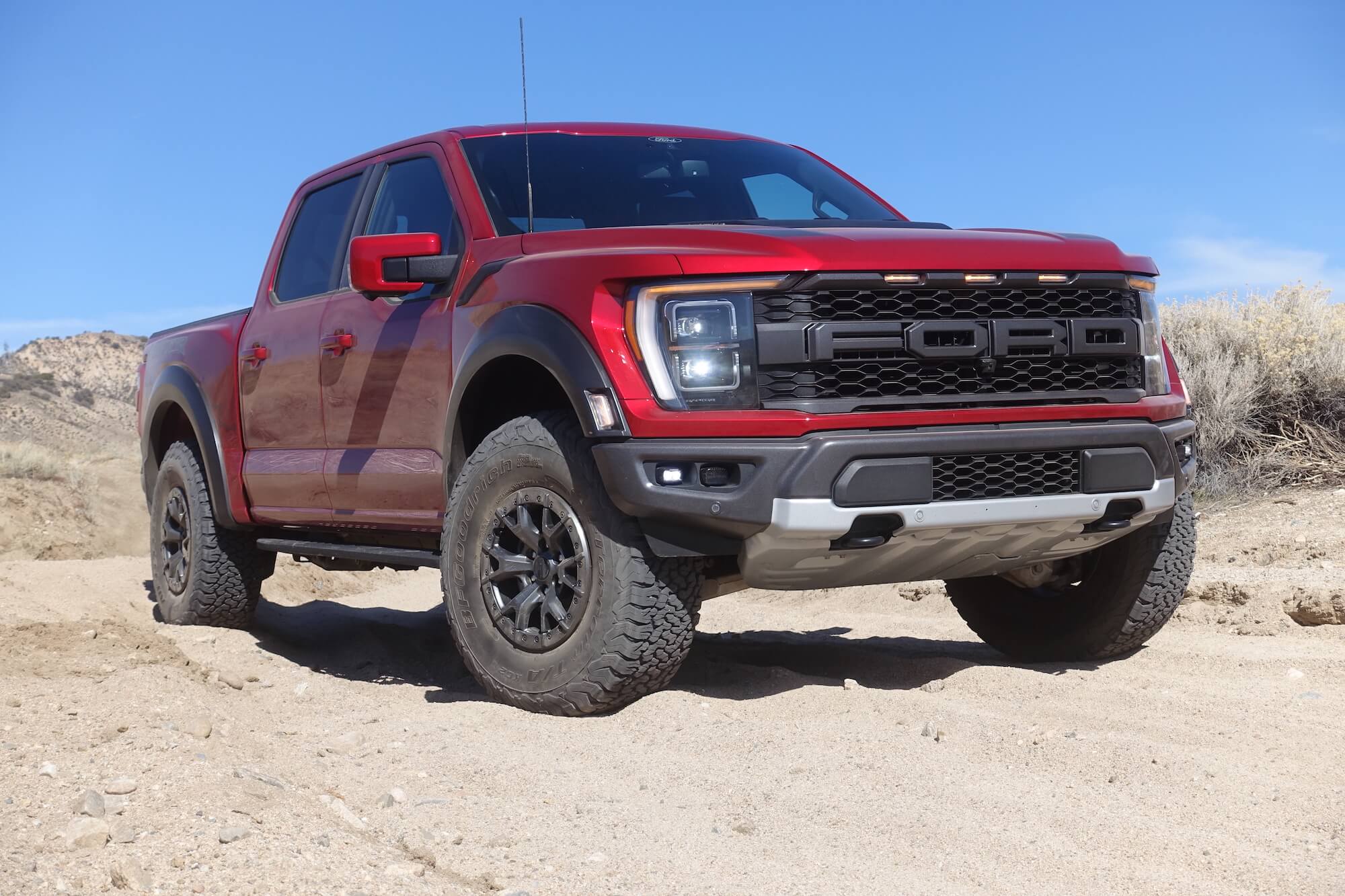
2021 Ford Raptor – First Drive
The original Ford Raptor totally disrupted the off-road truck market. Here was a factory-engineered pickup that had 11.2-inches of travel up front, over 13-inches in the rear, 35-inch tires and a locking rear diff. That stuff was bleeding edge factory off-road tech twelve years ago. And the industry inspired others to follow in the Raptor’s capable footsteps. Just look at all the solid factory 4X4s that have come since from the Chevy ZR2 to the Ram TRX. But when it hit the market in 2010, there were no other vehicles that could come close to the Raptor’s off-road performance. We had a chance to ride along in one of the first Raptor prototypes back in ’09 and we were blown away by the capability. We said, “as the desert opens up into a wide wash, our Raptor hits 80 mph and floats over the terrain. That speed would cripple most trucks out here, but the supple suspension takes the beating and feels remarkably stable too.”
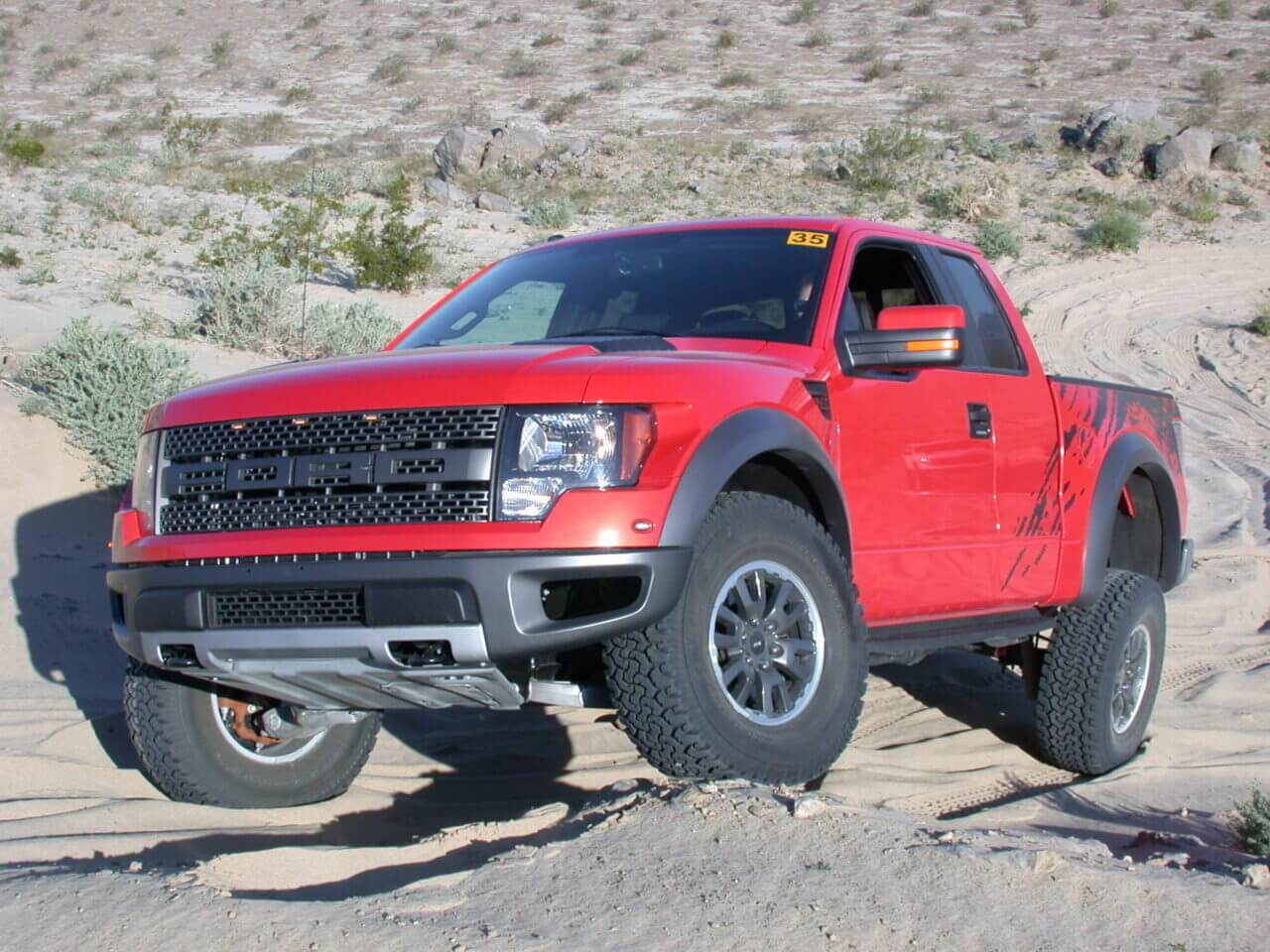
Of course, quite a lot has changed with the Raptor since that first one launched. The next-generation truck which came along in 2017 had to be quicker, more capable and better to drive in every terrain. The only casualty was the loss of the V8 powertrain. Still, the 450 hp Ecoboost V6 provided more of everything compared to the outgoing V8—except perhaps for a more pleasing exhaust note. That impressive second-generation truck had improved wheel travel (13-inches up front and 13.9-inches in the rear, an optional Torsen front diff and further cemented the Raptor’s reputation as the world’s best factory high-speed off-road vehicle.
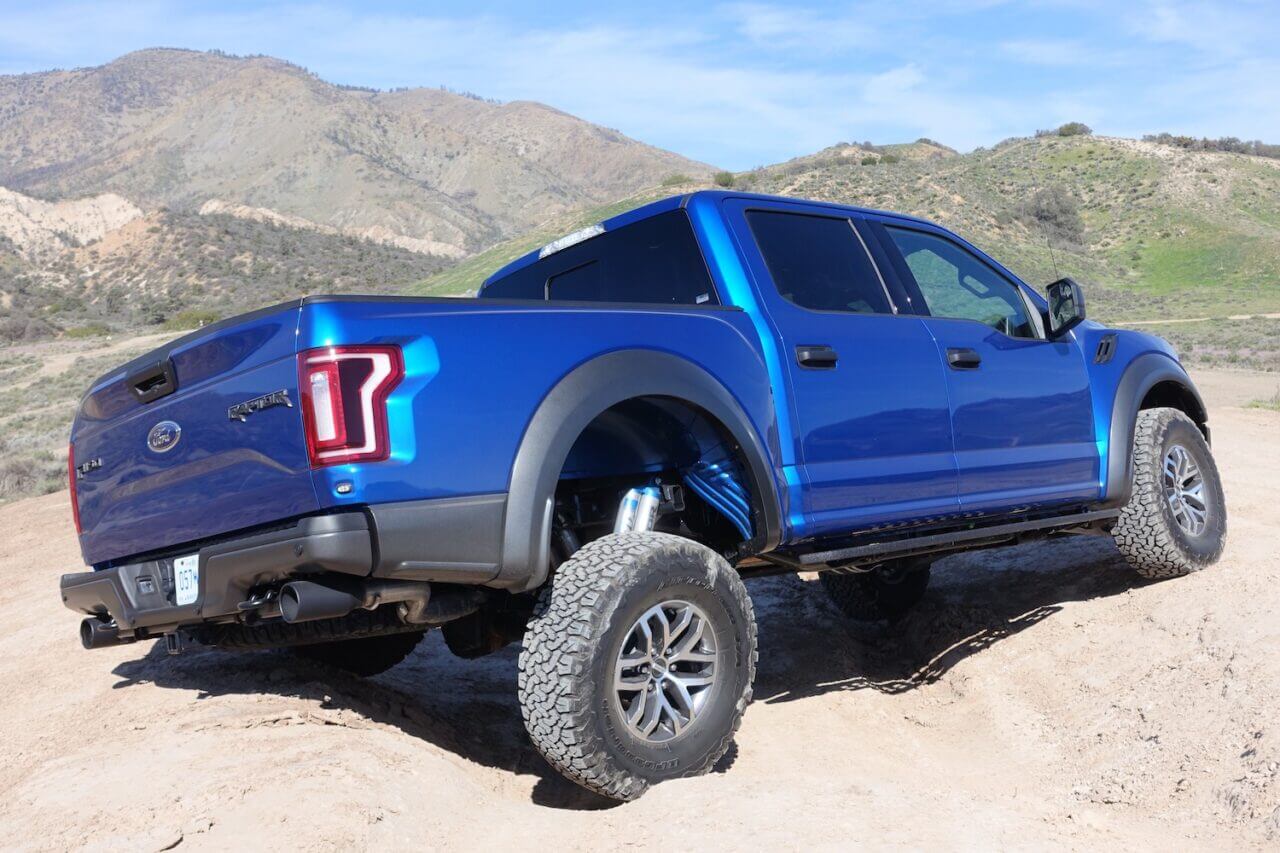
But with competitors on the ground and churning a little dust in the Raptor’s face (T-Rex, we’re looking at you) it was time to upgrade the OG desert runner. And the full redesign couldn’t have come at a better time for Ford. Consumers are positively rabid for off-road vehicles and especially ones at the most capable end of the spectrum. As expected, the new Raptor has been in high demand since it launched last year. And now, we finally have our chance to spend a few days with the beast.

The new Raptor may not have a fire-breathing supercharged V8 like the TRX (yet) but it’s the only pickup that can be optioned from the factory with 37-inch tires. That’s a massive tire for a production truck and we wanted to know how that tire performed in the dirt and on the street. So we borrowed an $82,475 Rapid Red Raptor and spent a week with the rig tackling trails at Hungry Valley SVRA in Gorman, CA and logging some street and highway miles here in LA. Here’s what we found.
The Hardware
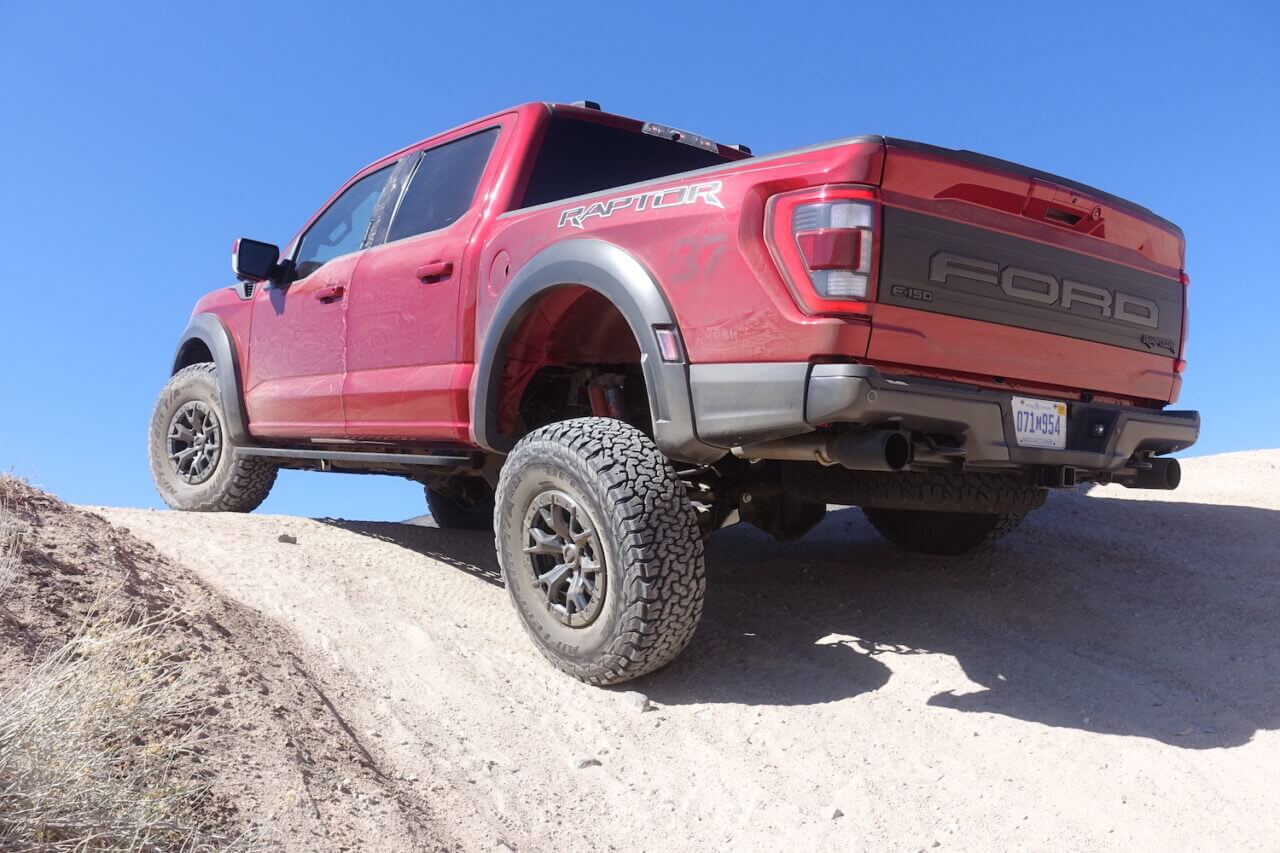
The chassis of any Raptor is certainly the focal point. And to create the new Raptor, Ford went deeper and more detailed than any of the past versions. This new one has 15 percent more wheel travel than the first-gen trucks. Up front, there are longer and stronger shock towers than what comes on the normal F-150 as well as new pivot points for the lower control arm. And Ford actually lowered that front differential to allow for boosted wheel travel. Of course the front track is wider than a standard F-150 and Ford beefed up the suspension with new knuckles, control arms, wheel bearings, ball joints and CVs too. The 37-inch tire trucks have specific reinforcements to combat the added stresses. Our truck’s 4.10:1-geared 8.8-inch IFS axle was fitted with the optional Torsen front differential too.
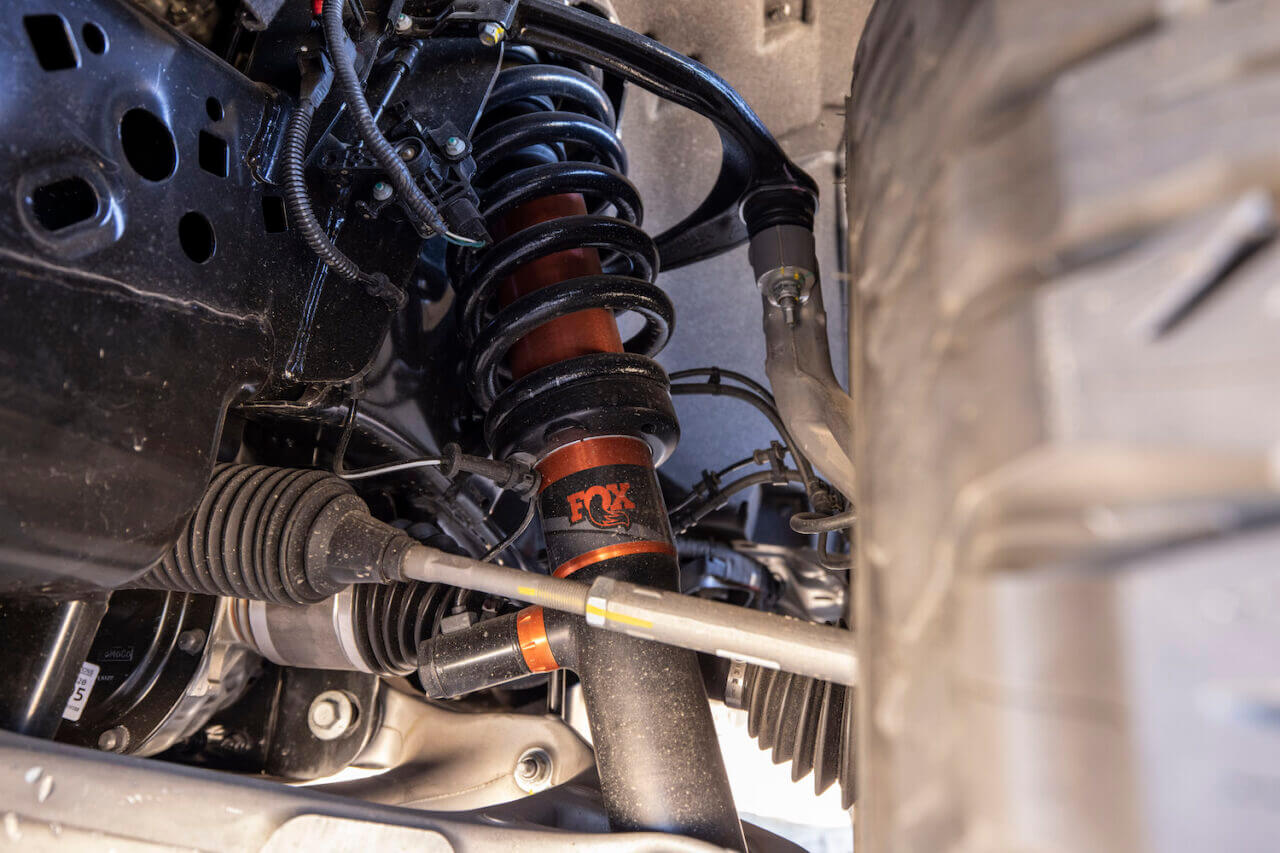
The suspension uses longer coils as well as new Fox Live internal bypass dampers with a larger 3.1-inch shock body than the previous ones. These computer-controlled dampers make adjustments 500 times a second and can be adjusted (along with exhaust note) with steering wheel-mounted buttons. The 37-inch tire trucks have a small lift of less than half an inch that comes from taller spring perches. Trucks with the 35-inch tires have 14 inches of front wheel travel but the 37-inch trucks are limited to 13-inches—nothing shabby about that. And the Fox dampers specified for this 37-inch tire package have a specific damping calibration and a larger rod diameter. These next-gen Fox dampers can provide an astonishing 1000 lbs. of damping force at each corner and are electronically tied into the truck’s drive modes, so they can optimize performance for every terrain.
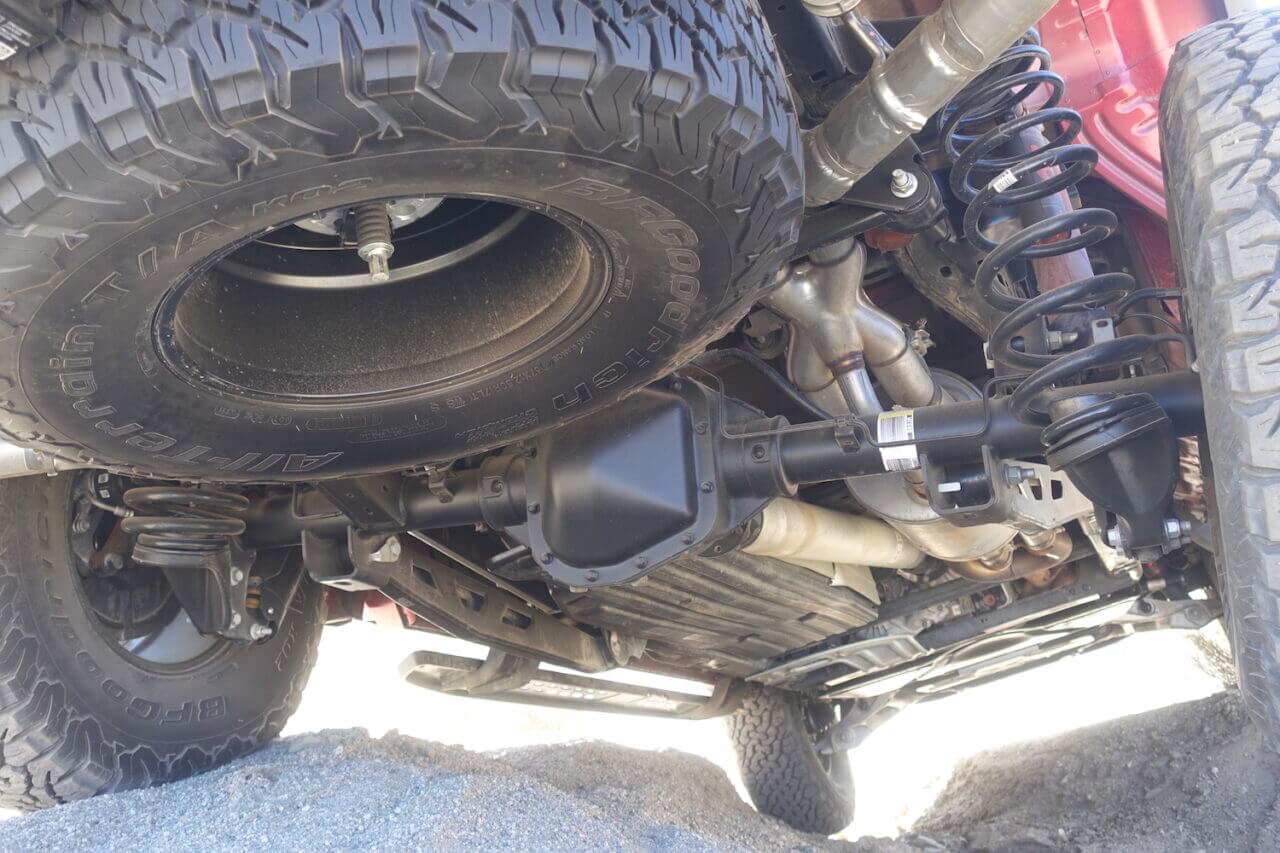
The rear suspension is where the revolution really takes place. The Raptor is the only version of Ford’s F-150 that uses a five-link coil-spring suspension. Ford says the coil-link design adds control, stability and traction too versus a leaf-sprung setup. The suspension has long trailing arms and 24-inch tall coils that provide up to 15-inches of travel with 35-inch tires or on our 37-inch truck, 14.1-inches of travel. Ford tells us those trailing arms and special bolt-in spring seats make it more friendly for aftermarket suspension systems. The big 9.75-inch solid axle offers a standard electronic locking diff.
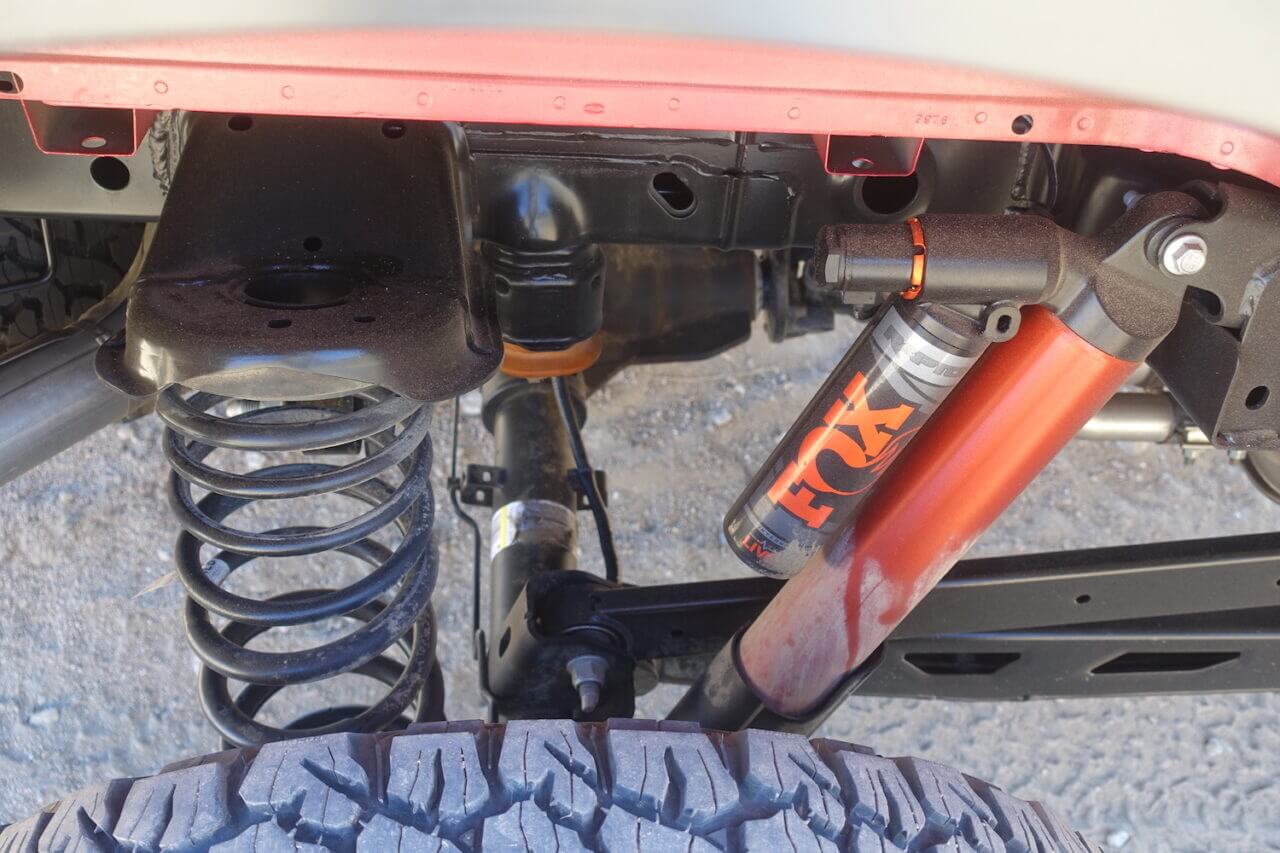
The 37×12.50R17 BFG All-Terrains look beefy inside the Raptor’s big fenders. And they really contribute to the truck’s capabilities. The approach angle of 33.1 degrees, departure angle of 24.9 degrees breakover of 24.4 degrees are excellent numbers. And that’s especially true for a crew cab pickup riding on a massive 145-inch wheelbase.
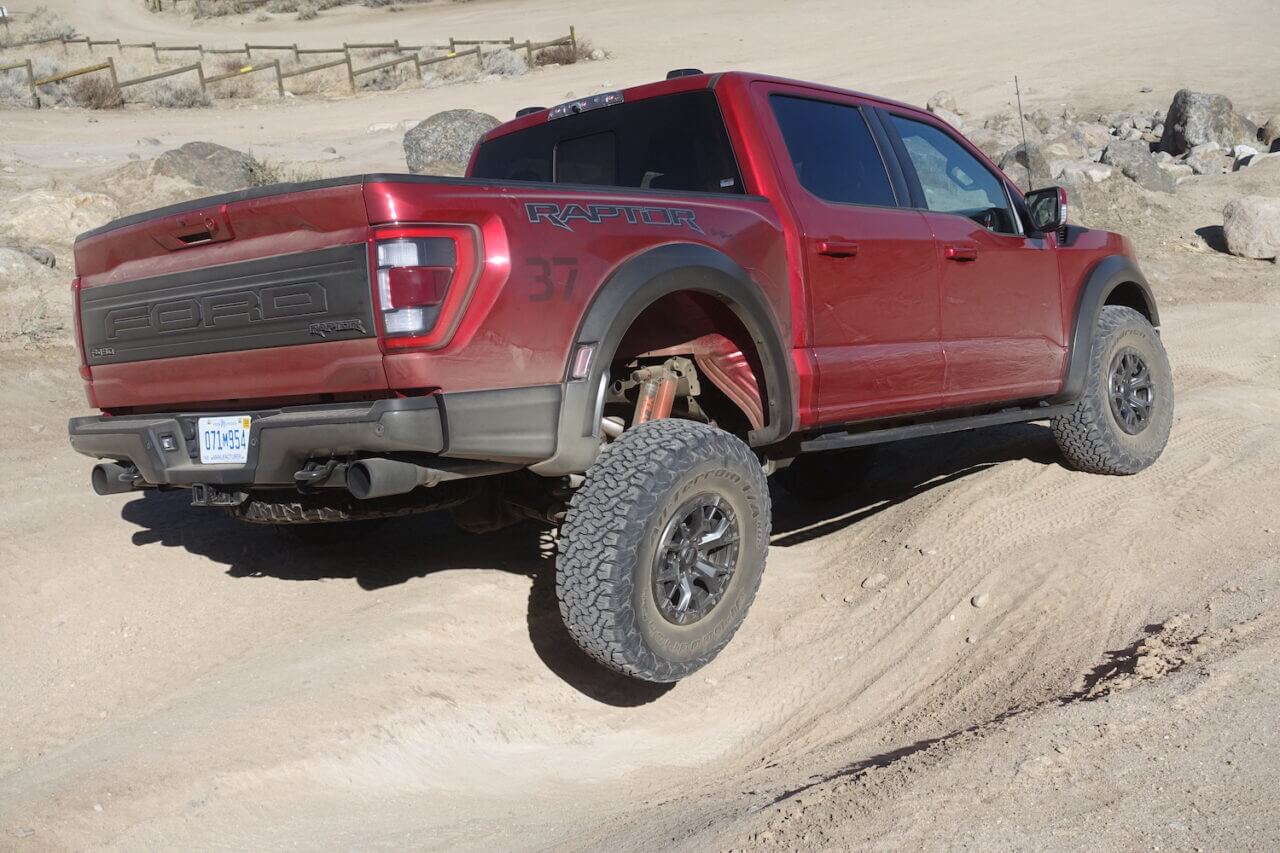
The ground clearance beneath the chassis is impressive with almost 14-inches under the Raptor’s beefy skid plate package and nearly 11-inches under the rear differential. On Four Wheeler’s 22 degree ramp, the new Raptor with the standard 35-inch tires (https://www.motortrend.com/reviews/2021-ford-f-150-raptor-wins-pickup-truck-of-the-year/) scored an RTI of 617. Our pal Dan Edmunds (https://www.youtube.com/watch?v=6vcjkYS04RI) ramped a Raptor with 37-inch tire and found it to score an RTI of 537. That’s a fairly significant difference. So, those that favor a bit more clearance will sacrifice some wheel travel and flex.
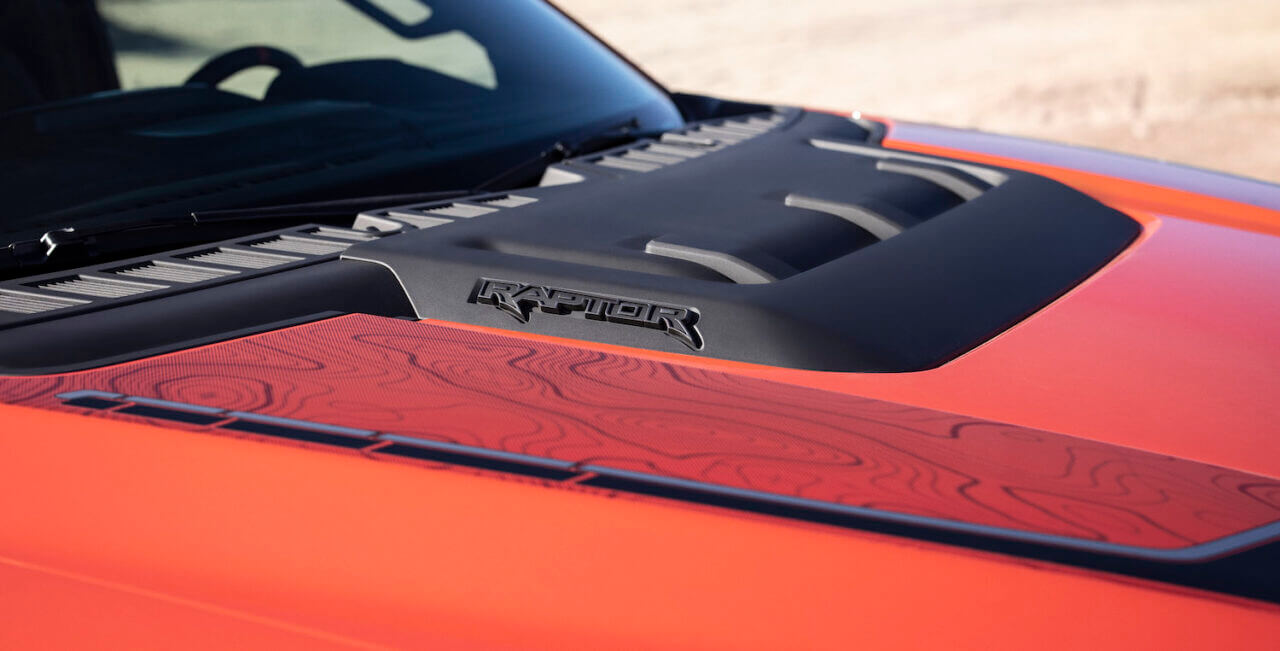
Under the hood, the Raptor uses Ford’s proven 3.5-liter Ecoboost V6 that develops the same numbers as before—450 hp at 5,850 rpm and 510 lb-ft of torque at 3,000 rpm. Although the numbers didn’t change, Ford did bring the torque peak down by 500 rpm, so that should help in real-world driving. Do we wish there was a V8 under that hood? Well, yes. But that is coming in the form of the Raptor R. Plus, Ford has a new active exhaust system that offers four modes (Quiet, Normal, Sport and Baja) to help tailor the V6’s sound profile to your mood and terrain.
The V6 is still backed by a 10-speed automatic along with Borg Warner’s Torque-On-Demand transfer case that can proportion torque thanks to a clutch-type setup from front to rear (in 4Auto mode) depending upon the Terrain Select drive mode (Normal, Sport, Slippery, Off-Road, Baja, Tow/Haul and Rock Crawl). Or it can of course lock into a 50/50 torque split for 4WD high range and a 2.64:1 low range.
In terms of tech, the Raptor still offers Trail Control, essentially an off-road cruise control. The system can be engaged up to 20 mph. Simply steer the line you want to drive and the truck takes care of the rest. One new electronic aid that comes standard on the Raptor is One Pedal Drive. We’ve experienced this on the Bronco already. Basically it combines the functions of the accelerator and brake into one pedal. So, when you lift off the throttle you receive a gentle braking. We’ve found this to be quite a nice system to use on certain rock crawling obstacles.
The Raptor is rated to tow an 8,200 lb. trailer, up 200 lbs over the last-gen 2017 model one we tested. And our 37-inch truck carried a payload rating of 1,327 lbs. You can put the truck’s bed to work rather easily thanks to the optional power tailgate and step. Plus the 2KW Pro Power system turns the Raptor into a mobile mini-generator, powering items right from the bed outlets. Smart.
On the Street
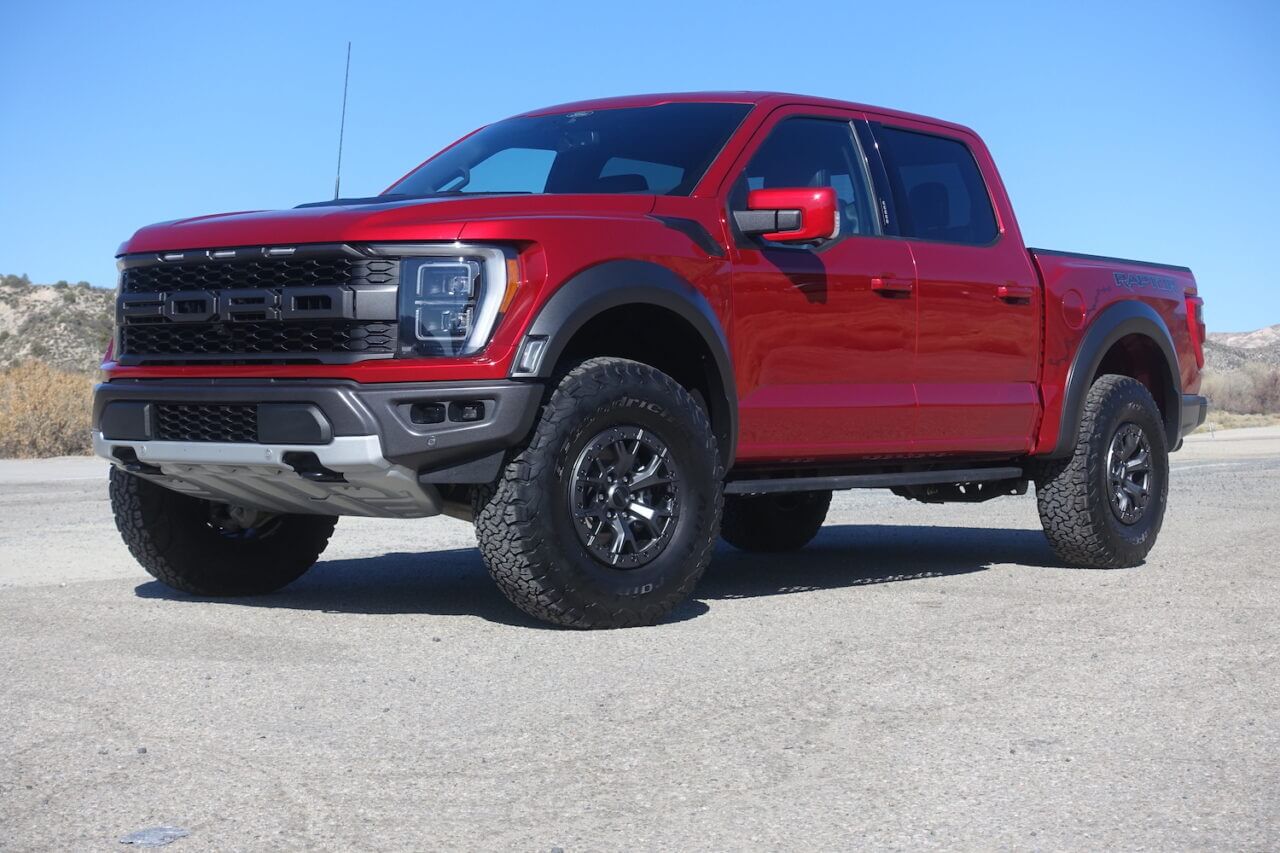
If you’re looking at the Raptor and thinking, that monster must be too much to drive on the street—think again. The Raptor’s new 5-link suspension rides smooth over the worst city potholes we could find. Part of that could also be the mammoth 37-inch tires too. But either way, we’d happily pilot the Raptor around town as a daily driver. That said it does seem big and a little heavy too when pushed into some higher speed corners. And the rig’s sheer size makes parking a pain. But who cares. This thing is F-U-N.
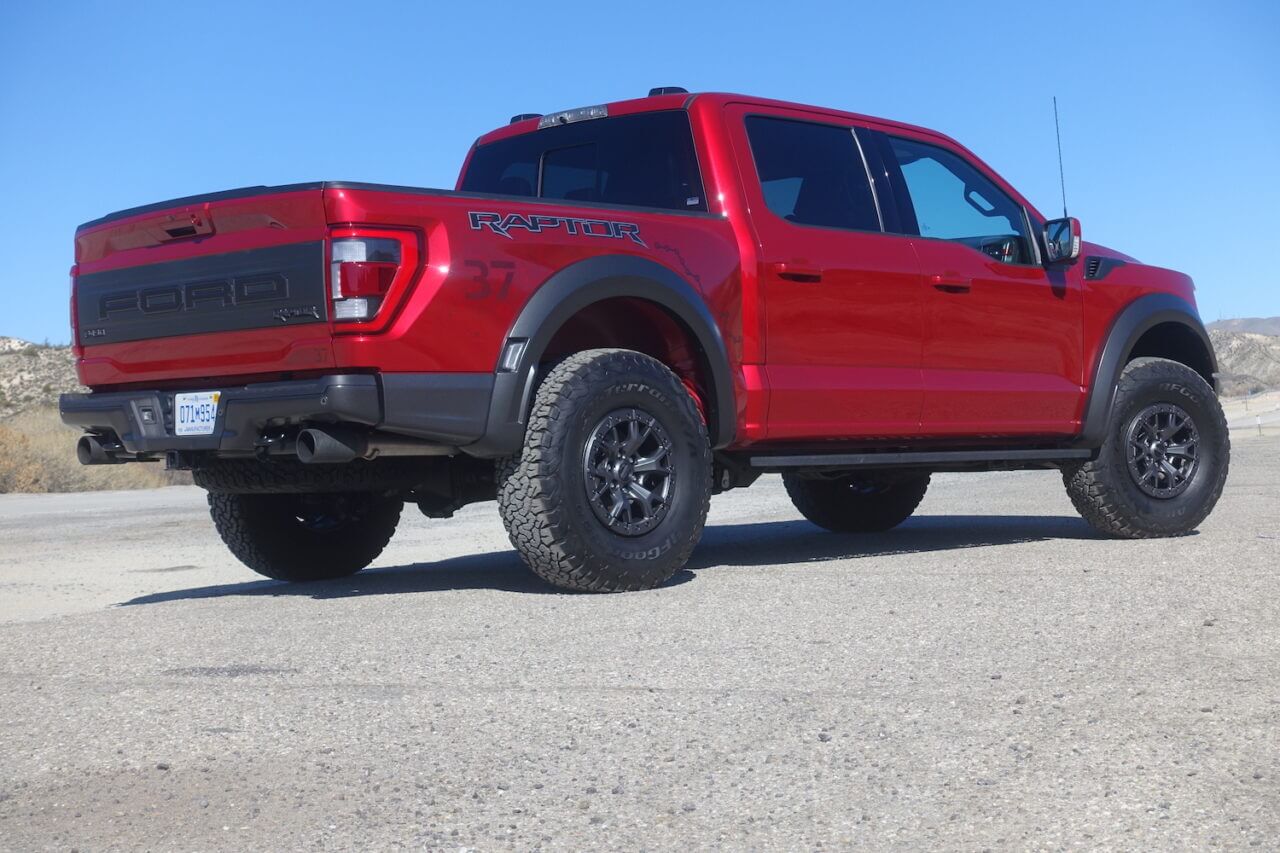
Sure, the TRX is ridiculously quick. But the Raptor’s turbocharged V6 has plenty of power and certainly enough plaster a wide smile on your face. Plant your right foot and the truck just rips with nice crisp shifts from that 10-speed. For the best experience, click over to the Sport drive mode. But no matter the mode, there’s always a massive wave of torque available whenever you need it. And on the freeway, its accessible with just a slight toe-in of the throttle. It’s so easy (even with those 37s) for the Raptor to push past 75 or 80 mph without really much pedal pressure. So beware. Go easy on that throttle and the Raptor will settle into a loafing cruise, turning over just 1,800 rpm at 70 mph. The only real downside is that the Raptor’s powertrain is that it just doesn’t have the Trophy Truck roar of the Ram TRX.
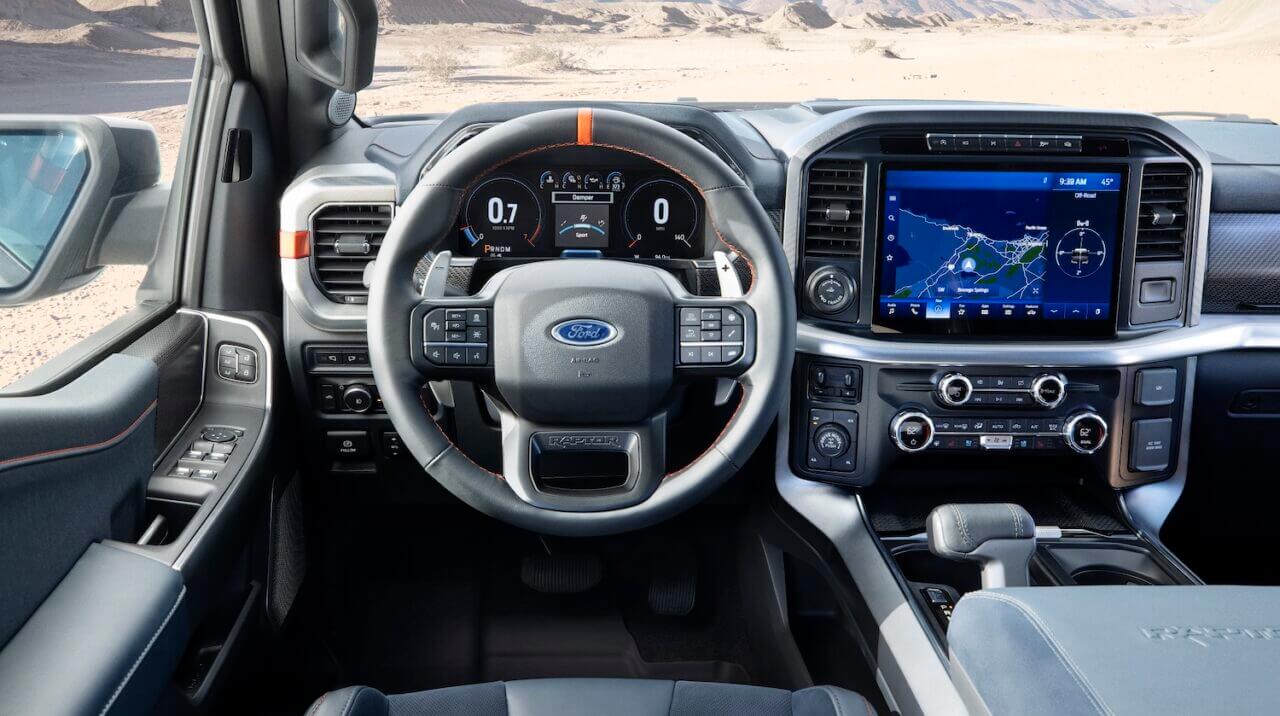
On the inside, we appreciated those suede-like and grippy blue Recaro performance seats. That are supremely supportive. The dash and door material is neat too, almost like denim. The rest of the Raptor’s interior is just as solid and useful as any F-150. It’s amongst the best-in-class to be sure. Our truck had the fold-flat shifter to allow for the center console to convert into an interior work surface. It’s a brilliant option and we used the surface as a table to eat lunch.
The EPA rates out Raptor at a fairly dismal 15 mpg city and 16 mpg on the highway. Good thing is that it has that 37 gallon fuel tank. On our trek we saw almost 14 mpg. That’s about one mpg worse than the last Raptor we tested back in 2017. But considering that test had more freeway miles, we’ll call it a wash. In either case, it certainly sips less fuel than the Ram TRX.
On the Trail
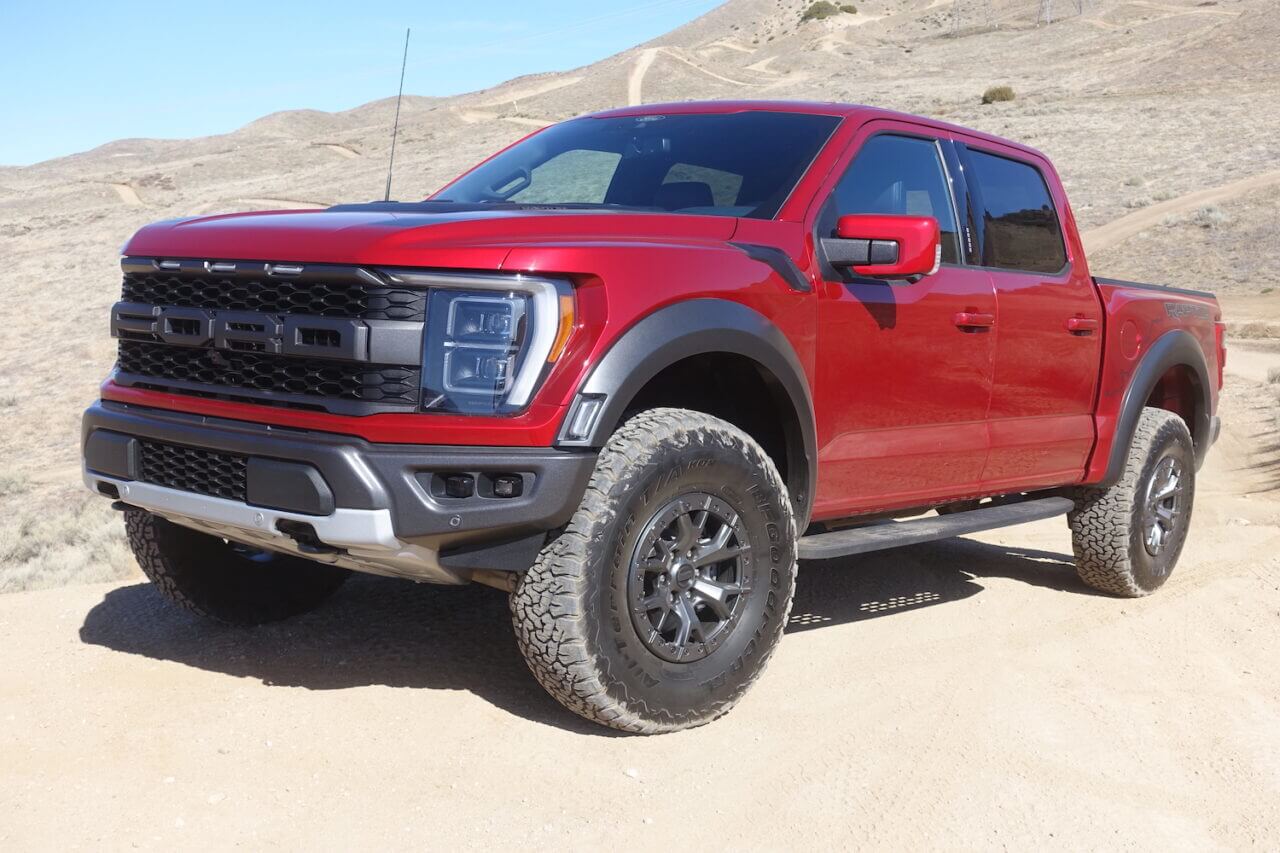
Take a tape measure to a 37-inch tire Raptor and, as we mentioned above, the clearances are serious. This is one tall truck. After all, the side steps are 17 inches off the ground. All those impressive clearance numbers provide a ton of trail confidence for the driver. In a full size pickup we’re testing we always consider body damage. After all, we borrow these trucks. But with the Raptor you can assume it’s going to clear most moderate obstacles—and it does.
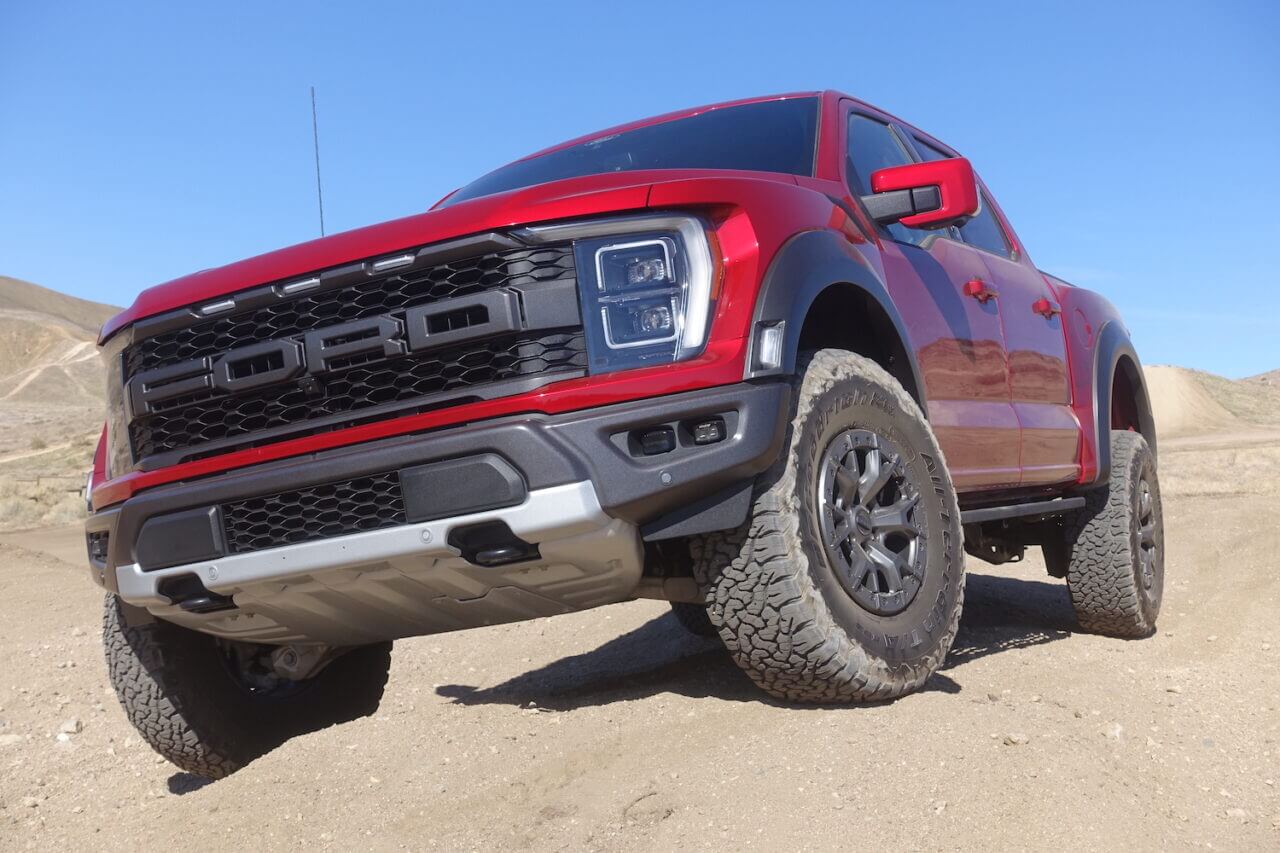
The Raptor’s forte is of course, the higher speed off-road sections. And on the steep motocross whoops around the park, we were able to maintain some good speed. Baja mode is key here as it loosens up the stability parameters enough to have a little fun. The Fox Live Valve dampers are excellent here and the whole suspension can take a hard hit without bottoming. The smart thing about these Fox dampers is that they adjust and change to suit the terrain, so the longer we hit those higher-speed whoops and moguls, the better it performed.
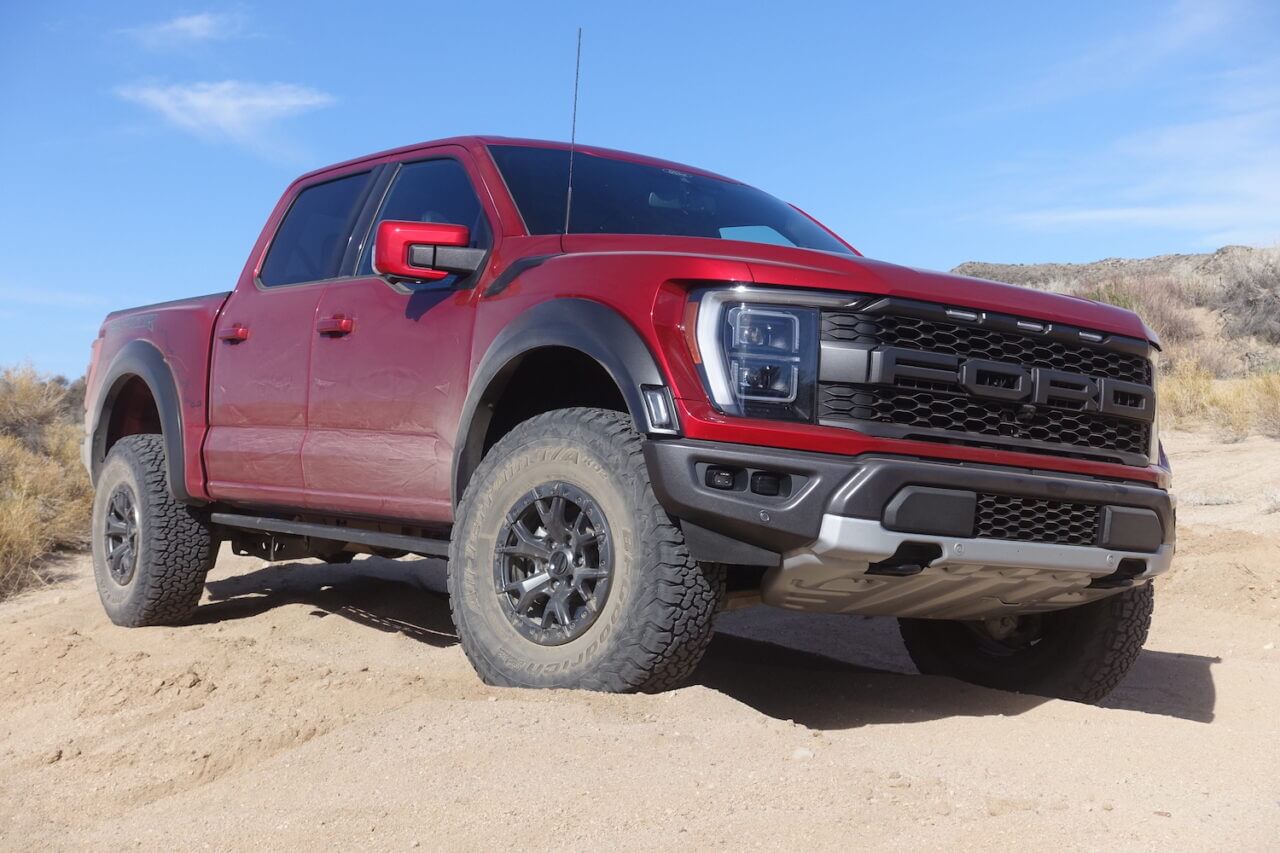
The park’s sandy washes were easily the most fun we had all day. The Raptor just eats these sections up. It doesn’t mind 2WD here either as long as the stability control is turned off. You can really feel how much better the rear axle is controlled by that five link. There’s almost no axle hop and the truck is simply a fishtailing machine. However to have the best handling and to really put the power down, Baja mode is once again the best choice. Because Baja engages the front axle, you can really pile on the speed quickly and have a more precise cornering. And thanks to those giant tires, the occasional pumpkin-sized rock passes right underneath the rear diff without touching. On a real sand dune, this thing would be a total buggy.
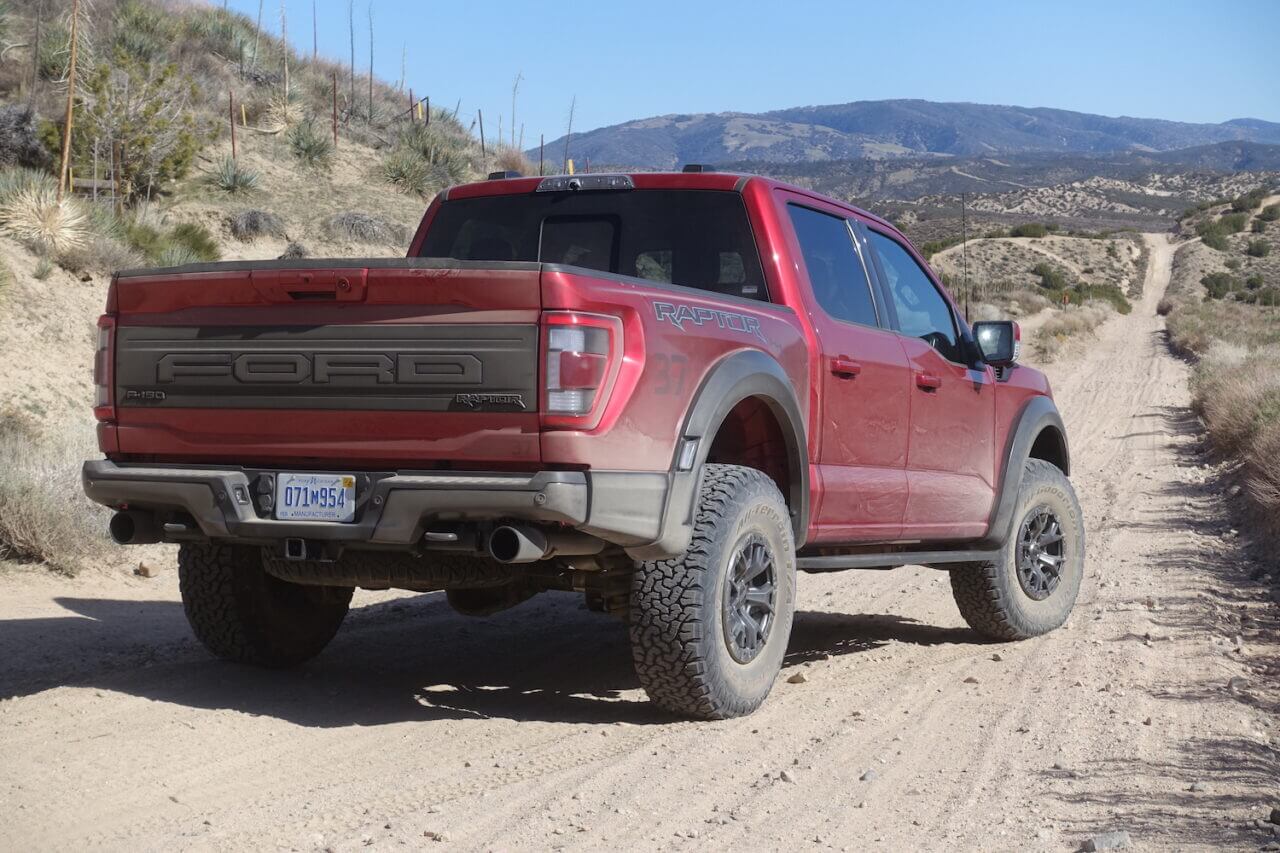
On the fire roads around the park, we could routinely hit 40-50 mph without fear of bottoming out. The Raptor is a dirt road boss. Some Raptor buyers might opt for the standard 35-inch tires and take the benefit of the additional suspension travel. And if we spent most of our off-roading miles on fire roads or in the desert, we might too.
Switching over to the slow-speed sections, the Raptor was no less impressive. Click over to Rock Crawl mode and the system locks the rear axle and prompts you to shift to low range. But shifting into these modes works best when you shift into the mode first and then shift the transfer case. Doing the opposite or spinning the mode dial too slowly will get nanny messages across the dash prompting you to switch in or out of low or high range. We certainly like the smart tech here but a day of shifting in and out of the modes and transfer case settings had us yearning for a simpler system. Regardless, once the truck is in Rock Crawl mode it made short work of our hill climb.
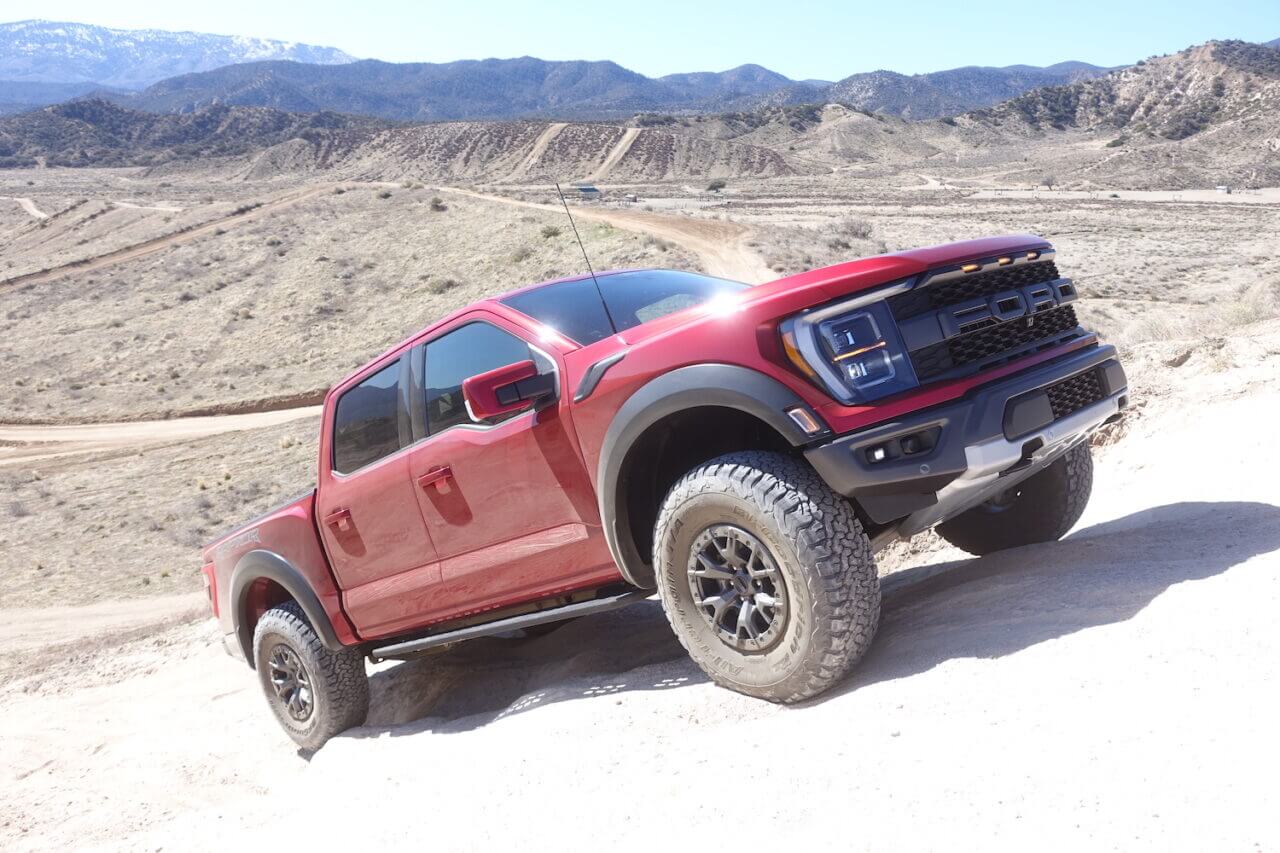
We crawled the hill slowly and thanks to those giant tires, locked rear axle and the Torsen up front pulling, we crested the hill without so much as a slip. It’s encouraging (and kinda fun) to feel that limited slip tugging at the steering wheel. It’s no locker to be sure, but that diff certainly boosts traction. The climb was so easy we tried it again without the rear locker engaged and the truck once again made it to the top with just a bit more slipping in the rear. This new Raptor might be the best hill climber we’ve had out here.
The articulation mogul section always gives us pause when we attempt to drive a stock vehicle up. That’s because most factory 4X4s simply don’t have the clearance, articulation or traction to tackle the section elegantly. But it really helps showcase which trucks can handle a tougher trail and which ones should stick to the easier ones. And with the rear locker engaged and the drive mode in Rock Crawl, the Raptor had no trouble. Even when the suspension flex was fully maxed-out, those traction diffs really worked well and got the truck through the last obstacles.
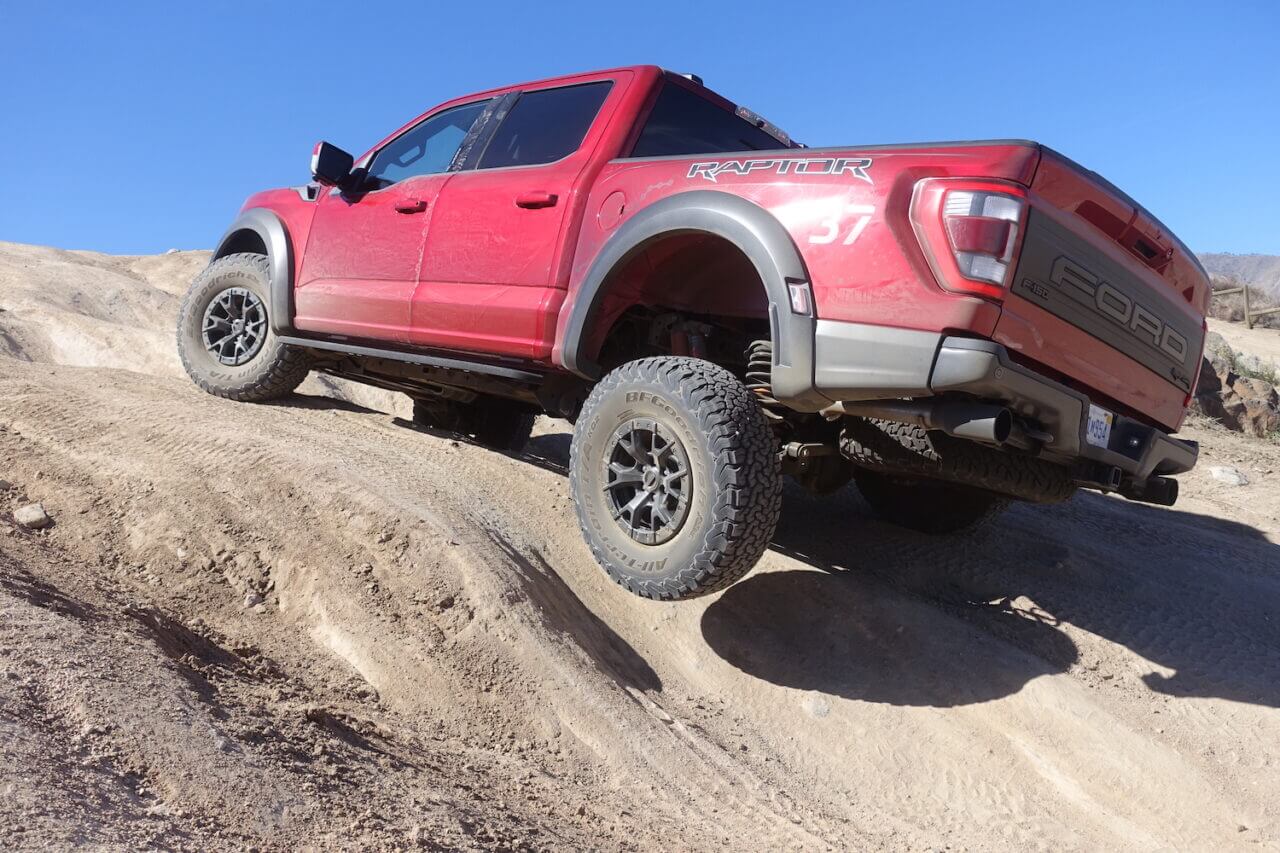
There’s so much space underneath the Raptor’s chassis that we never came close to touching dirt with any part of the truck, and that’s almost never the case with a pickup of any size. Just for fun, we shifted into 4WD high range and unlocked the rear diff to see if the truck could complete the section. And yes, it did. In part thanks to the Ecoboost’s generous low end torque. Okay so there was more tire slip and more dust too as the Raptor’s traction control hunted for grip but it was still less drama than some 4X4s we’ve tested in low range. We also tried the Trail Control off-road cruise control system here on a third run through. It worked for sure, but we’d probably score it 6 out of 10. The system is lurchy and less smooth than our own right foot. But heading downhill on a steep hill, it does make tricky obstacles a bit more relaxing.
The Bottom Line
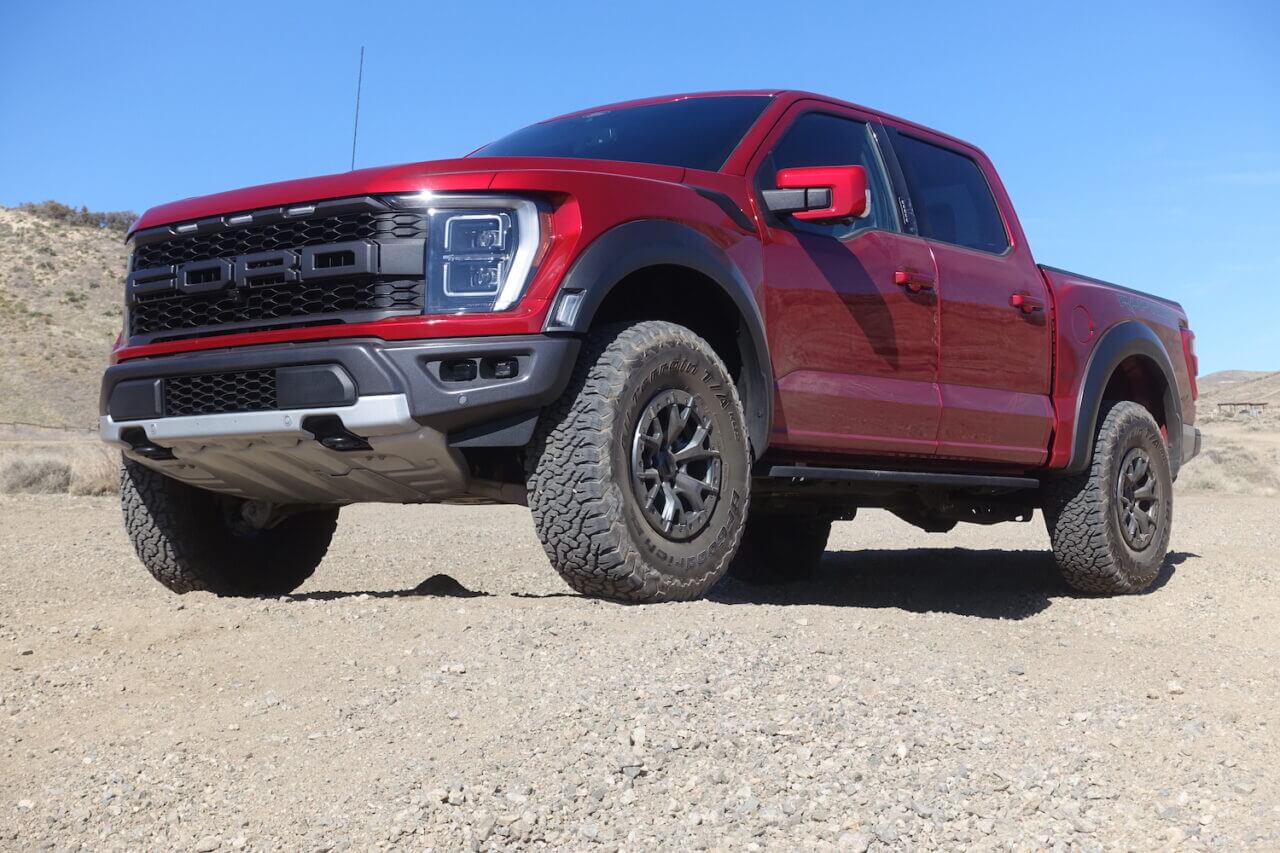
To many off-roaders, the Raptor is a dream machine. It’s just so capable, so quick and does everything so well—it’s hard not to fall for this truck. And we really liked the benefits provided by the 37-inch tire package and the factory durability testing behind it. However, that package adds a whopping $7,500 to the cost of this nearly $83,000 truck. That’s a lot of money. And we wonder if using that money in the aftermarket to fit those 37s or even 40-inch tires wouldn’t make more sense. Still, the Raptor is an amazing machine and one we’d certainly park in our own garage. But we might wait a few months because as mentioned earlier, Ford is developing a Raptor R to compete with the TRX. Stay tuned.



2